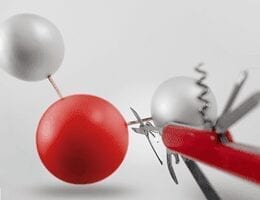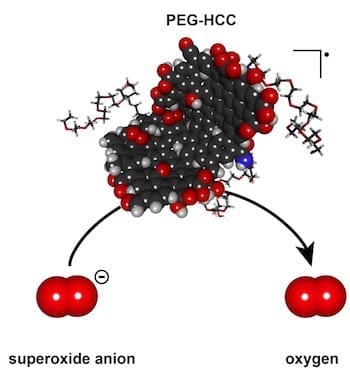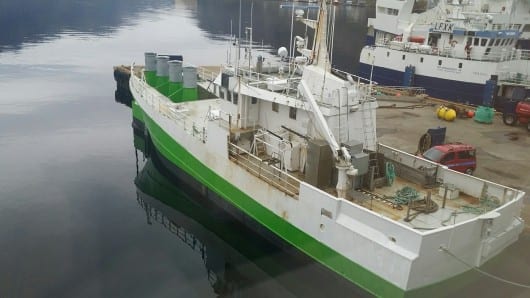
“We’re almost at a 1 percent efficiency rate of converting sunlight into isopropanol,” Nocera said. “There have been 2.6 billion years of evolution, and Pam and I working together a year and a half have already achieved the efficiency of photosynthesis.”
Harvesting sunlight is a trick plants mastered more than a billion years ago, using solar energy to feed themselves from the air and water around them in the process we know as photosynthesis.
Scientists have also figured out how to harness solar energy, using electricity from photovoltaic cells to yield hydrogen that can be later used in fuel cells. But hydrogen has failed to catch on as a practical fuel for cars or for power generation in a world designed around liquid fuels.
Now scientists from a team spanning Harvard University’s Faculty of Arts and Sciences, Harvard Medical School and the Wyss Institute for Biologically Inspired Engineering have created a system that uses bacteria to convert solar energy into a liquid fuel. Their work integrates an “artificial leaf,” which uses a catalyst to make sunlight split water into hydrogen and oxygen, with a bacterium engineered to convert carbon dioxide plus hydrogen into the liquid fuel isopropanol.
The findings are published Feb. 9 in PNAS. The co-first authors are Joseph Torella, a recent PhD graduate from the HMS Department of Systems Biology, and Christopher Gagliardi, a postdoctoral fellow in the Harvard Department of Chemistry and Chemical Biology.
Pamela Silver, the Elliott T. and Onie H. Adams Professor of Biochemistry and Systems Biology at HMS and an author of the paper, calls the system a bionic leaf, a nod to the artificial leaf invented by the paper’s senior author,Daniel Nocera, the Patterson Rockwood Professor of Energy at Harvard University.
“This is a proof of concept that you can have a way of harvesting solar energy and storing it in the form of a liquid fuel,” said Silver, who is a founding core faculty member of the Wyss. “Dan’s formidable discovery of the catalyst really set this off, and we had a mission of wanting to interface some kinds of organisms with the harvesting of solar energy. It was a perfect match.”
Read more: A Breakthrough in Artificial Photosynthesis
The Latest on: Artificial Photosynthesis
[google_news title=”” keyword=”Artificial Photosynthesis” num_posts=”10″ blurb_length=”0″ show_thumb=”left”]
via Google News
The Latest on: Artificial Photosynthesis
- JinkoSolar gets grant for improved solar cell structure for enhanced photoelectric conversionon May 6, 2024 at 3:19 am
Revolutionize solar cell efficiency with JinkoSolar's patented design featuring pyramid structures and precise doping concentrations. Learn more about this innovative technology now!
- JinkoSolar gets grant for photovoltaic cell with metal and non-metal pattern regionson May 6, 2024 at 2:30 am
Discover the groundbreaking patent by JinkoSolar for a novel photovoltaic cell design with pyramid structures, tunneling layers, and doped conductive layers to enhance solar energy conversion ...
- Toward artificial leaves that float on water, bubbling fuelon May 2, 2024 at 2:14 pm
Researchers have now made such an artificial leaf device using an organic photovoltaic (OPV) material. Depending on the catalyst used, the device either splits water to make hydrogen fuel or splits ...
- The 8 Best Grow Lights for Countertop Herbs, Small Gardens, and Helping Indoor Plants Thriveon April 30, 2024 at 2:33 pm
Narrow spectrum lights are noted for serious gardeners and plant nerds who need to support different stages of development. Blue-light spectrum (450-490 nm) grow lights are used for early-stage growth ...
- The Advantages of Going Solaron April 29, 2024 at 9:33 am
This article explores the numerous advantages of adopting solar energy, both from an environmental standpoint and its capacity to influence economic and personal development.
- Is Artificial Photosynthesis the Next Source of Renewable Energy?on February 19, 2024 at 9:09 pm
Photosynthesis is the process by which plants convert sunlight into energy, inspiring sustainable energy solutions. Artificial photosynthesis aims to imitate the process of photosynthesis to ...
- The other half of the equationon October 20, 2023 at 12:43 am
Artificial photosynthesis — splitting water with light — is an attractive way to make hydrogen, but what happens to the oxygen? A catalyst that aids in the efficient production of gaseous ...
- Artificial Photosynthesis: A Game Changer for Clean Energyon September 25, 2023 at 5:00 pm
that brings us a step closer to the day carbon dioxide could be used as a resource.
- Artificial photosynthesis machines invented to create oxygen in space for astronautson June 13, 2023 at 11:15 am
In a game-changing technological breakthrough, scientists are creating artificial photosynthesis devices that astronauts will use on future space missions. On our lush and abundant planet Earth ...
- Artificial Photosynthesis—Making Fuels Directly from Sunlighton May 13, 2022 at 5:40 pm
Nathan Lewis will present about the discovery and development of materials and a system architecture for the direct production of fuels from sunlight. The membrane-embedded microwire array approach is ...
via Bing News










